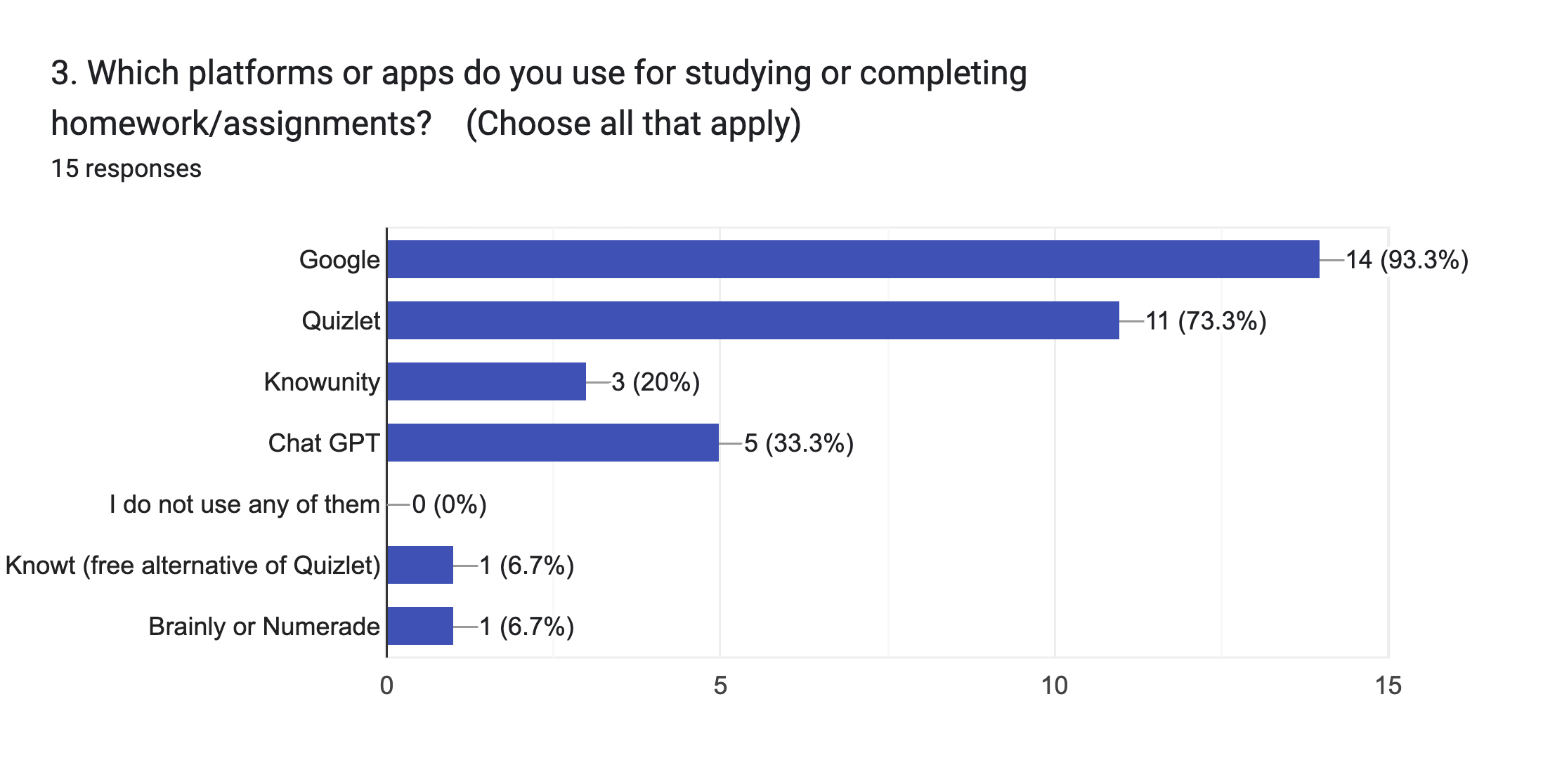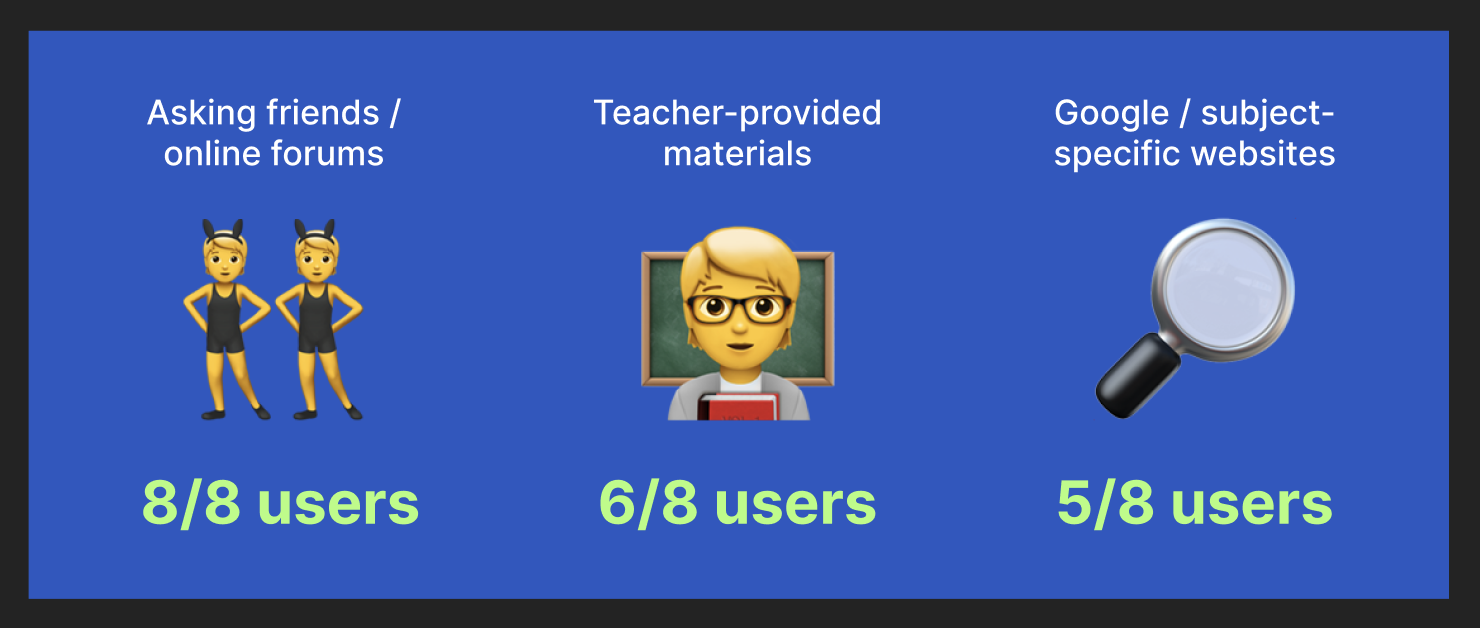Knowunity
“Where millions of students cannot find an answer”Timeline: 5 weeks
Methods: Survey, Moderated Usability Test, Interview
Category: Research
Methods: Survey, Moderated Usability Test, Interview
Category: Research
Hugely popular in Europe, German edtech startup, Knowunityrecently launched in the U.S. and needed insights for users’ study habits across middle school and high school.
Methodology

1. Survey
2. Interview Prep
3. Moderated Interviews
4. Analysis and Suggestion
Survey
For the survey, we wanted to generally assess the role technology plays in students’ homework completion flows. At the time of publishing this case study, we recieved 15 responses.
Two questions we wanted to answer upfront were:
1. How do you normally find help with your homework?
2. Which platforms or apps do you use for studying or completing homework/assignments?


Interview
From our survey respondents, we were able to recruit 8 participants for an interview and moderated usability test. To effectively understand how students were doing homework as well as to assess Knowunity’s function, we decided to break the sessions into two parts:
A.) General semi-structured interview
B.) Targeted usability testing of specific product features see the full interview script and protocol here
For the first part, we asked questions related to the student’s current school situation and preferences for finding information. During the second phase, we used the information gathered upfront to test a feature of the Knowunity app as it related to the problems they mentioned.
Analysis

From our interviews, we were able to identify 3 key user groups:
-
Middle school
- High school
- High schoolers in AP classes
For each group, we were able to determine the types of assignments, how long they spent, and what the deadlines were.
These were critical points for us to paint an accurate picture for an international audience of U.S. student habits.

We were also able to clarify our hypotheses that we gathered from our initial survey:
-
8/8 of our users mentioned asking their friends for help
-
6/8 users talked about their instructors providing materials they relied on
- 5/8 users said they used google and other specific websites

In the effort of identifying inputs, we found that students’ queries fell into 2 main subjects: Math and Liberal Arts/Science.
For math, students tended to input the full question they were being asked in their homework assignments, whereas other subjects like english or social studies had students doing more exploratory research.
It is important to mention, that AP students knew that their coursework was standardized and were searching much more narrowly for the answers to their assignments.
Suggestions
We came up with several suggestions, but I’d like to focus on our most impactful one here. You can find the rest of our suggestions in the slide deck linked at the bottom of this article.
From our interviews, we were able to identify a specific gap between what the app offered and what students needed: educator materials. We came up with the idea that Knowunity should implement a feature that would allow teachers to upload their own content to the app and create classroom-specific groups to foster student engagement and discussion.
 selected quotes from interviews
selected quotes from interviewsKnowunity has a strong emphasis on being a platform for students, by students, and we wanted to maintain that ethos when formulating our reccommendations.
To ensure that our proposed feature was in line with Knowunity’s spirit we proposed the following 3 specs:
- Teachers create groups
-
Chats are private for students only
- Content is sharable across the platform
As shown above, many students rely on some form of cloud-based resource sharing from their teachers. This reccommendation would aim to make Knowunity the one-stop platform for this type of sharing, while simultaneously increasing their user base simply by adding the credibility of educators.
Feel free to reach out with any questions, and please take a look at the full report here.